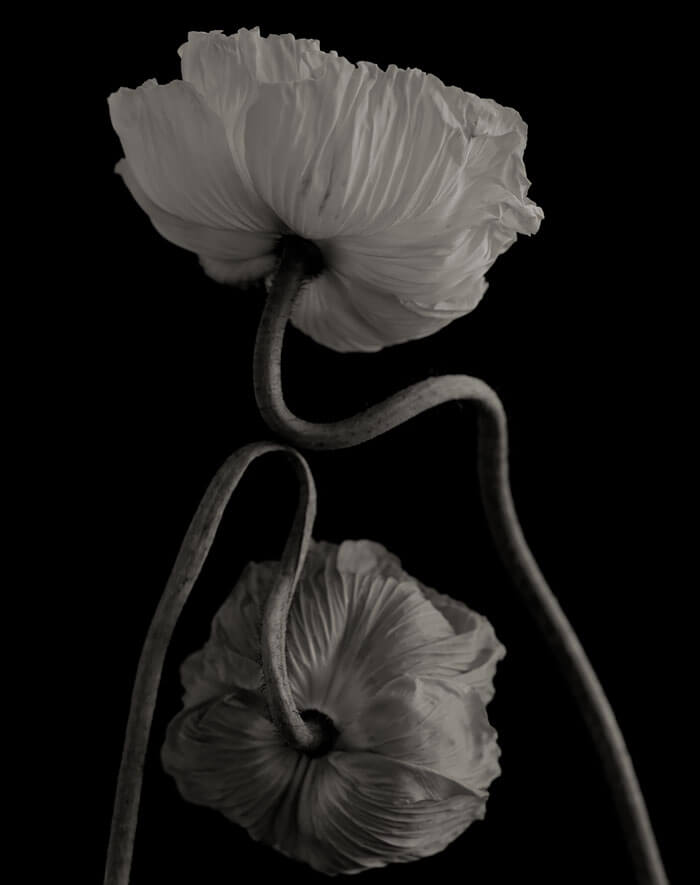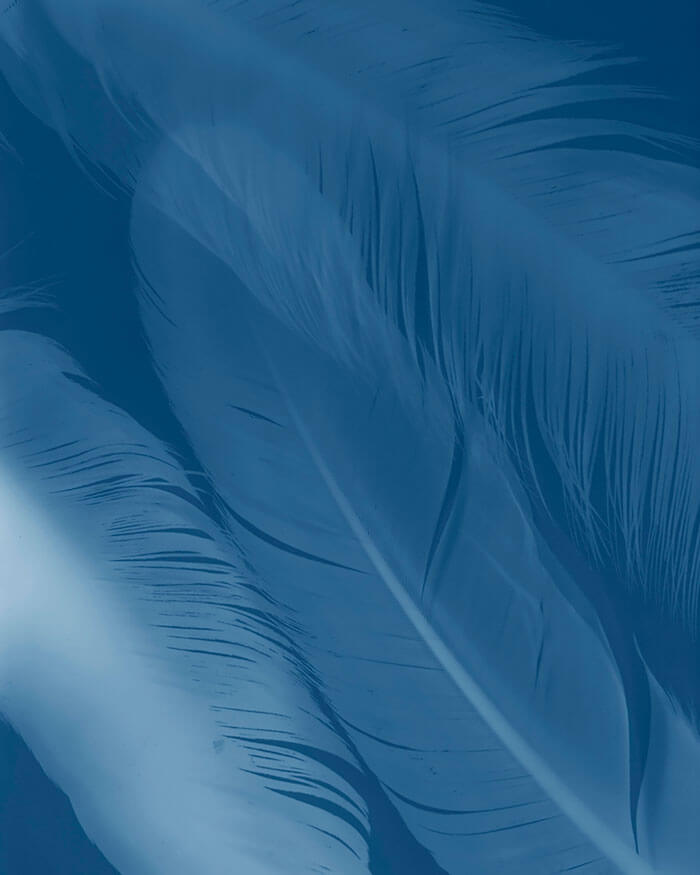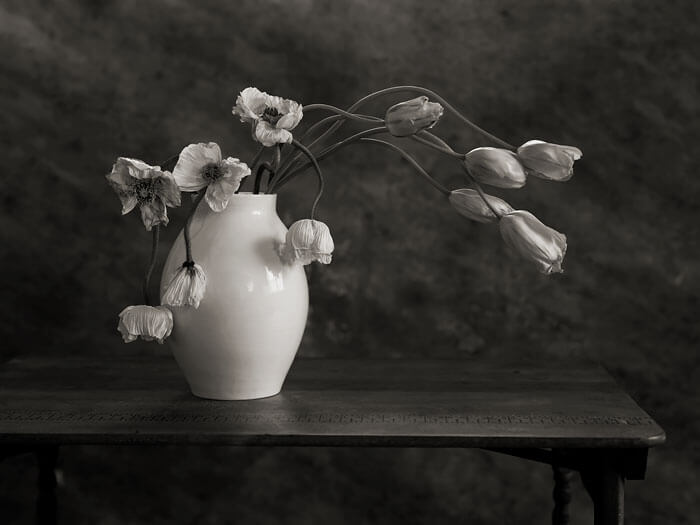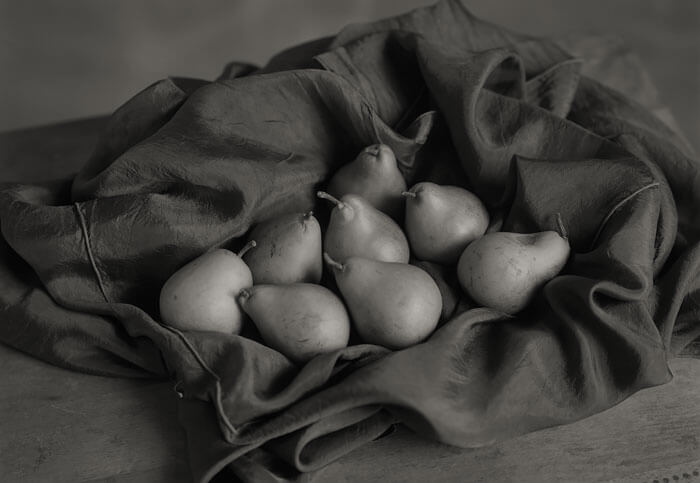
Scheinbaum & Russek, Santa Fe
September 14 – October 19, 2018
I am not a photographer. When I tell a friend I’m writing a review of Yumiko and Kenro Izu’s exhibition In Harmony at Scheinbaum & Russek Ltd., she asks me to forgive her before saying: you are not the right person for that job. She tells me the Izus are virtuosos: photographers that photographers will look back at in two hundred years and exclaim upon. And I—steeped in twenty-first century image culture with no education in photographic processes—might have a difficult time grasping the beauty and, above all, the importance of the work. This I take as a very good challenge.
If you have never visited Scheinbaum & Russek, I recommend a trip (you’ll need to contact them through their website for an address). It’s a family operation, and I am greeted like an old friend: ushered in, handed a glass of water, offered a seat. The photographs on exhibit are only part of what catches my attention about the space, which would be reductive to call a “gallery.” There are shelves stacked with boxes of prints, neatly labeled drawers, and a vast photo book collection lining the walls. If you know little about photography, David Scheinbaum may step out of the office to explain the process of dual-coating a platinum-palladium print with cyanotype, the result of which I admire in Yumiko Izu’s Icarus 34 (blue, foggy-edged feathers overlapping gently, exhibiting a vast range of rich tonal blues—and shyly nodding at a failed trip to the sun).

The prints are 1:1 contacts of their large-format negatives, and while each framed image appears small in the gallery, when examined closely, they function on scales of the gigantic rather than the miniature. Kenro Izu’s Seduction of Pear #1086 depicts a cluster of fruit centered within an unfurled cloth and inhabits entirely the mid-tones famous in the palladium printing process. This tonal depth, I am told, is testimony to Izu’s mastery of the tactile dark room process of printing the images: the chemistry of precious metals, the “painting with light” while developing, the ritual and performance of creating a photograph, not when a camera is positioned in front of its subject, but later, through hours in the darkroom. I find myself seeing, finally, past a cluster of pears in the center of an image and into the obsessive and immaculate vision of a fellow set of eyes. “Has anything in your life ever been held this tenderly?” the photograph asks in its gentleness.
The show accentuates the importance and difficulty of working alongside one’s beloved: the ricochet of influence that forms two bodies of work in proximity.
Both artists were born in Osaka—and both are celebrated—though I find myself spending the most time with Yumiko’s photographs. The artist, twenty years her partner’s junior, draws influence from Kenro’s mastery of process and stillness, yet her photographs embrace a tenacity in the scale and abstraction of their subject matter that is unique. I fall in love with a pair of flowers in Secret Garden Noir 7, photographed from the “shoulders-up,” close enough to see the brittle shadows of hundreds of black hairs protruding from their coiled stems, yet at a distance that incites the narrative of two acrobats, contorting themselves into frame.
In Harmony solicits its viewers to latch onto formal simplicity while propelling toward wider motifs. The show accentuates the importance and difficulty of working alongside one’s beloved: the ricochet of influence that forms two bodies of work in proximity. The Izus’s work also foregrounds the boldness required by contemporary image-makers not to pander to a twenty-first century marked by attention-scarcity. Rather than bend into excess or stimulation, Yumiko and Kenro’s works meditate on light and shadow and form, requiring their viewers to recalibrate—and study up—or miss the beauty altogether.





